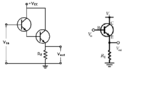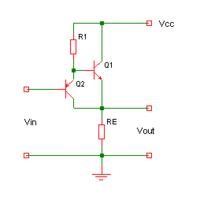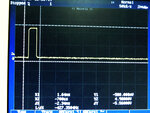vinodquilon
Full Member level 3

- Joined
- Oct 24, 2009
- Messages
- 158
- Helped
- 2
- Reputation
- 4
- Reaction score
- 2
- Trophy points
- 1,298
- Activity points
- 2,558
Consider the following Common Collector & Darlington emitter follower circuits,
CASE 1:
Let V(in) = 5V
Vcc(supply) = 10V
Emitter(load) resistance = 100 ohm
thus, V(out) should be 5V (following input)
Corresponding Load current will be 5/100 = 50 mA
CASE 2:
Let V(in) = 5V
Vcc(supply) = 10V
Emitter(load) resistance = 33 ohm
thus, V(out) should be 5V (following input)
Corresponding Load current will be 5/33 = 152 mA
Which source will provide this additional current requirement [Vcc or V(in)] ?
CASE 1:
Let V(in) = 5V
Vcc(supply) = 10V
Emitter(load) resistance = 100 ohm
thus, V(out) should be 5V (following input)
Corresponding Load current will be 5/100 = 50 mA
CASE 2:
Let V(in) = 5V
Vcc(supply) = 10V
Emitter(load) resistance = 33 ohm
thus, V(out) should be 5V (following input)
Corresponding Load current will be 5/33 = 152 mA
Which source will provide this additional current requirement [Vcc or V(in)] ?







